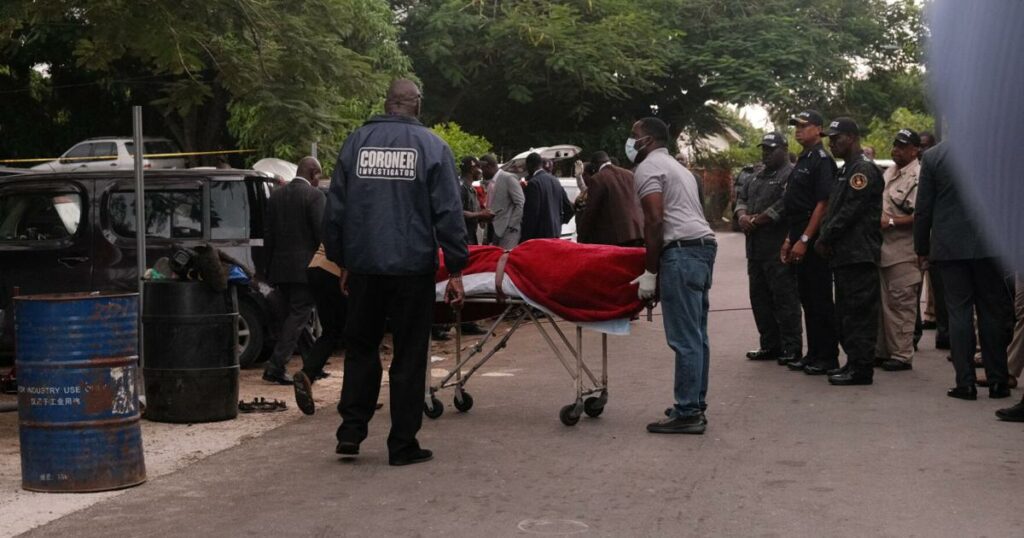A United Nations study on crime in Latin America and the Caribbean found The Bahamas had the largest share of murder victims who were men.
The report, Global Study on Homicide 2023, noted that worldwide, the perpetrators and victims of homicide are disproportionately male.
“This is particularly the case in Latin America and the Caribbean, where roughly 91 percent of homicide victims in 2021 were male while the global average was 81 percent,” the study found.
“The countries with the largest share of male homicide victims in Latin America and the Caribbean in 2021 were The Bahamas (95 percent), Guyana (93 percent), Haiti (93 percent), Colombia (92 percent) and Brazil (92 percent).
“The men involved in homicidal violence across Latin America and the Caribbean are also disproportionately young. This is partly to be expected since the sub-region has a relatively large youth population, although the share of young people has been decreasing over time. In the Americas, including Northern America, more than 45 percent of homicide victims were aged between 15 and 29 years in 2021.
“Countries that registered the highest share of homicide victims in this age group included The Bahamas (52 percent), El Salvador (49 percent), Guatemala (48 percent) and Colombia (46 percent). Most victims in this age group were males.”
The Bahamas had 95 murders in 2019, 73 in 2020, 119 in 2021, 128 in 2022 and 110 in 2023.
In 2022, the Royal Bahamas Police Force said, 92 percent of the 128 people murdered were men.
In 2023, police said, 95 percent of the 110 people murdered were men.
The majority of victims in both 2022 and 2023 were between the ages of 18 and 35, according to police statistics.
The UN study said the large share of young men who are victims of murder in the region can also be linked to the demography of criminal organizations across the sub-region.
“This is because, while the leadership of organized criminal organizations may be older, on the whole the rank and file of drug trafficking factions, militia groups, street gangs and other criminal entities is typically made-up of young men,” it said.
“There are multiple motivations for joining criminal organizations, ranging from a desire to belong, to the pursuit of economic opportunity, with young Latin Americans, over 80 percent of whom live in urban settings, being deeply concerned about their lack of education and employment opportunities.
“These motivations were apparently exacerbated during the COVID-19 pandemic, when the risk of recruitment of young people into criminal organizations increased.”
Roughly eight of 10 murder victims worldwide in 2021, were men or boys and two out of 10 were women or girls, the study found.
The available data shows that women and girls are “disproportionately affected by homicidal violence within the family, perpetrated by intimate partners or other family members”.
“In general, countries that record higher rates of female intimate partner homicide also tend to record higher rates of female family-related homicide,” the study said.
“However, rates of female intimate partner homicide exhibit much greater variability across countries in various regions than rates of female family-related homicide. In Latin America and the Caribbean in particular, women and girls are significantly more likely to be killed by intimate partners than by other family members, whereas the shares of female intimate partner and family-related homicides tend to be more equal in countries in other regions.”
TrendsThe study said that homicide rates in Latin America and the Caribbean have, for decades, been high and in some areas increased during the COVID-19 pandemic.
It said the Americas has had the highest regional murder rate in the world and the high rates of homicidal violence related to organized crime.
“Latin America and the Caribbean not only consistently has the highest homicide rate of any sub-region, but also had the highest proportion of homicides involving organized crime worldwide in 2021,” it said.
“Moreover, countries in Latin America and the Caribbean reported the highest proportion of homicides involving both male victims and firearms. In 2021, eight of the 10 countries with the highest homicide rates worldwide were located in Latin America and the Caribbean.”
The Caribbean experienced the most dramatic increase in homicidal violence in recent years, the report said, “largely because of intense competition between gangs over drug markets”.
“In 2022, the number of homicides in the Turks and Caicos Islands, a transit point between the Bahamas, Colombia and Venezuela (Bolivarian Republic of), climbed to 28 in October 2022, compared with 13 during the whole of 2021,” the study said.
“In Jamaica, the homicide rate reached 53.3 per 100,000 in 2022, with about 70 percent of homicides being connected to organized criminal groups or gangs in 2021.
“Saint Lucia recorded a homicide rate of 36.7 per 100,000 in 2022, a slight decrease from the previous year, while Saint Vincent and Grenadines reported a homicide rate of 40.4 per 100,000. Meanwhile, the homicide rate in Trinidad and Tobago rose to 39.5 per 100,000 in 2022, an increase of more than 30 per cent from the previous year, largely due to the splintering of large gangs into smaller violent factions.
“The homicide rate reached 31.2 per 100,000 in the Bahamas in 2022, and in Haiti, it surged to 18 per 100,000 in 2022, an increase of more than 35 per cent from 2021, due in large part to deepening tensions associated with gang-violence.”
Meanwhile, the homicide rate in Central America stabilized or decreased, the study said.
Source link : http://www.bing.com/news/apiclick.aspx?ref=FexRss&aid=&tid=673dd968b661421d8b75c9ca032a6e51&url=https%3A%2F%2Fwww.thenassauguardian.com%2Fnews%2Fbahamas-led-region-in-percentage-of-murdered-men-un-says%2Farticle_a0d3b654-a6c0-11ef-952e-3732e49cc586.html&c=1621201681390935876&mkt=en-us
Author :
Publish date : 2024-11-19 23:38:00
Copyright for syndicated content belongs to the linked Source.
